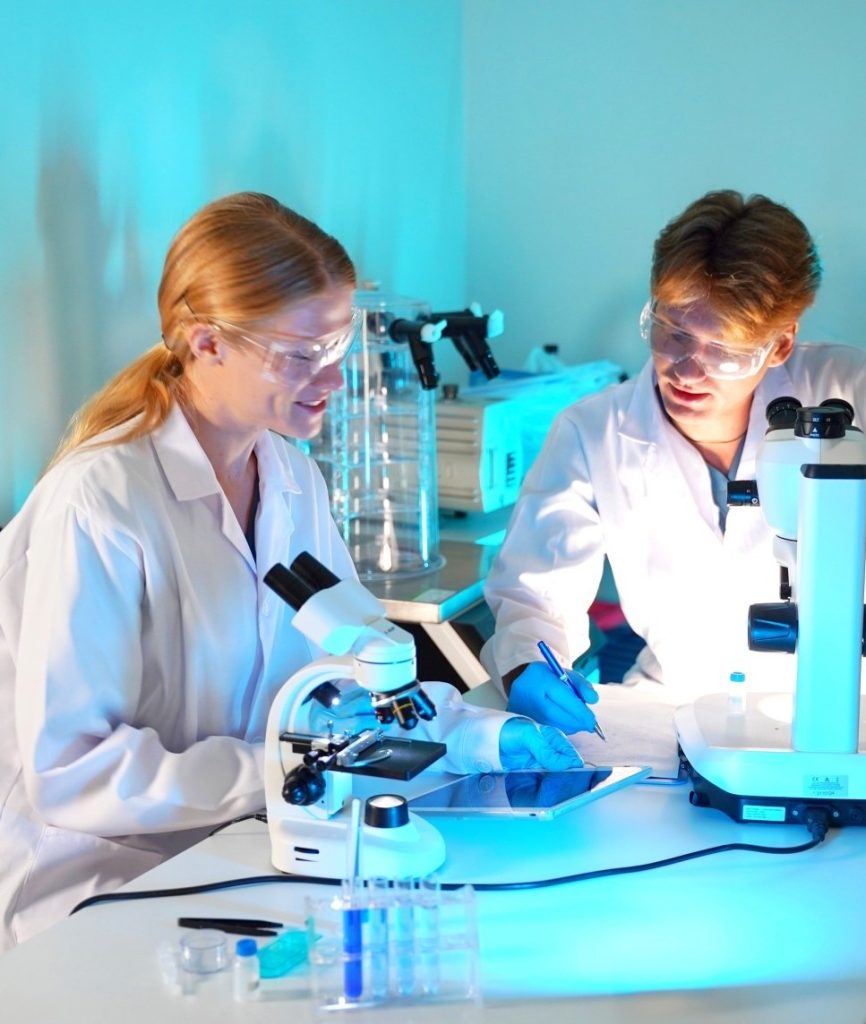STEAM exploratory activities
STEAM Laboratories
Arthropod expedition
Biology-Chemistry Laboratory
In this activity, we invite you to a micro-world expedition, where you will get to know the small terrestrial crustaceans – woodlice. Did you know that they breathe with gills, even though they live on land? That they enjoy moisture, but not water? That they have the ability to molt their skin and curl up into a ball when they feel threatened?
In this investigative activity, you will experiment with different microenvironments, explore crustaceans through microscopes, and observe the structures of their molts, as well as the hidden world of colours and shapes invisible to the naked eye. You will also learn more about animal classifications, anatomy, organisms’ adaptations to the environment, and ecology. In addition, you will try out different chemical substances, discover their properties, and understand how light spreads.
Creating musical instruments with microcontrollers
Physics-Engineering Laboratory
In this activity, you will explore why the human body can act as a conductor and find out how our energy can be used to transmit signals. Did you know that an average adult body can generate up to 200 W of energy – enough to light a couple of electric bulbs or power a small electronic device?
In the laboratory, using various materials and your own body, you will create electronic musical instruments. By exploring sound waves, electrical conductivity, and energy transformations, you will investigate how sound is born from an electrical impulse. Get ready to hear what kind of electronic sound your body can produce!
In this activity, you will learn more about different types of energy and their transformations, electronics and microcontrollers, the human body, the properties of sound, as well as controller programming, and the transmission of data and signals.
Thinking Mechanisms
Robotics-IT Laboratory
In this activity, you will rely on your engineering skills to build robots and take part in a technological survival mission. A real-world scenario – warehouse logistics – will become a programming challenge: the robot will need to pick up, transport, respond to obstacles, and find the optimal solution within a limited time.
Using sensors, logical algorithms, and mathematical navigation, you will explore why even a small mistake can change the entire outcome. Will the movement work as planned? Will the prajectory calculations withstand real-world conditions? Can you overcome the challenge when your only helper has not a heart, but code?
In this investigative activity, you will learn more about algorithm design and programming, data processing and analysis, and the application of digital solutions in the real world. You will also delve into the creation, testing, and improvement of technological systems, while developing your spatial thinking skills.
3D Mission: From Shape to Object
Smart City Laboratory
In this activity, you will work with visual, modeling, and digital programs to create characters, objects, and even game scenes. You will be able not only animate or use your creations virtually, but also to print them, turning your ideas into tangible objects. Here, creative design will be just as important as technological skills.
Did you know that 3D models are already being used in surgery, cultural heritage restoration, architecture, and even space exploration? Have you ever wondered where creativity ends and responsibility begins?
You will learn more about creative and technological design, materials and forms, the impact of technology on humans and the environment, and the creation and testing of prototypes. You will also develop your creativity and skills in using digital creation tools, while expanding your knowledge of digital ethics and copyright.
Program intended for – students in grades 7-12
Duration – 90 minutes
Registration – steam@mokslosala.lt
Price – 3 Eur per student
